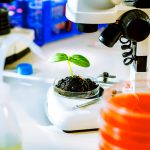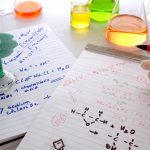Anytime
£495
Add ALEVEL10 at checkout for 10% Discount off Multiple A Level courses
This International A Level Chemistry Course with Edexcel will enable you to gain an essential knowledge and understanding of different areas of Chemistry.
Chemistry is the branch of science that studies the composition, structure, properties, and change of matter. It focuses on elements and compounds, which are made up of atoms, molecules, and ions, and how they interact and transform. You will also learn a variety of practical, mathematical and problem-solving skills.
These qualifications enable successful progression to further education courses in chemical sciences. Through Edexcel’s world-class qualification development process they have consulted with a number of universities in the UK, as well as internationally, to validate the appropriateness of these qualifications, including content, skills and assessment structure.
Our International Advanced Subsidiary and Advanced Levels in Chemistry sit within our wider subject offer for sciences. We also offer International Advanced Subsidiary and Advanced Levels in Biology, Physics and Psychology, and in Mathematics and Further Mathematics.
For more information about the Pearson Edexcel exam board, please click here.
There are no previous entry requirements for this course, however students are expected to have a reasonable standard of literacy.
You have the freedom to start the course at any time and continue your studies at your own pace for a period of up to 24 months from initial registration with the full support of your Tutor.
The Full A Level has six topics you will need to cover and the AS Level has three topics. These are listed below.
Students will be required to arrange and pay for their examinations at an Edexcel approved centre. We can provide an extensive list of these centres for you.
A Level Exams
There are six exams for the full A Level qualification.







AS Level Exams
There are three exams for the AS Level qualification.




Practical Assessment
It is really important to remember that the term practical skills covers a very wide range of requirements at A level. It does not mean just the ability to handle equipment in a school laboratory or know how to use some particular piece of apparatus. It ranges from using mathematics in a practical context to understanding how scientists investigate ideas, how they analyse their data and how they are very cautious when drawing conclusions.
Practical skills are assessed through a dedicated examination unit both at AS (Unit 3) and at A Level (Unit 6).
The practical assessment is by written exam only. For further information, please click here
On successful completion of all your exams for the A Level Chemistry Online Course, you will be awarded one of the following qualifications:
International A Level in Chemistry with Pearson Edexcel | International AS Level in Chemistry with Pearson Edexcel
Click here for more information about Pearson Edexcel and to be taken to their official website
Our Enrolment fee for this course is noted at the top of this page where you can enrol directly onto the course. This fee includes access to your course including tutor support for 2 years.
Our enrolment fee includes:
The only other fee you will need to pay is for your exams which is due approximately six months prior and this will be paid directly to the exam centre.

You can enrol online right now by Card or PayPal (Visa, Mastercard, Maestro and American Express). Alternatively, we also accept BACS transfer or we can send you a payment link.
Your A Level course will be online. You will access it via our online portal.
With our courses, we have learners from all over the world enrolled. Therefore, if we restricted your learning to certain times, not everyone would be available. All our courses are accessible 24/7 via our online secure portal. Any videos on your portal would be pre-recorded meaning you can work through your course at your own pace.
By opting for our International A Level, you can study the course from anywhere and exam centres are located all over the world. With our UK A Levels (AQA), you can study them from outside of the UK, however you would need to sit the actual exams for these within the UK.
You will be provided with eBooks for this course. If you want to purchase physical books in addition, then we can provide you with the book ISBN numbers.
The Guided learning hours for A Levels are as follows:-
AS Level: 180 hours
A Level: 360 hours
These figures are for guidance only. The number of hours needed to gain the qualification may vary depending on your previous experience of the subject.
Yes you will gain UCAS points and these depend on your final grade once you have completed your exams.
If you are referring to A Levels at college then yes!
You will sit the same exam as thousands of students across the world in an exam centre, and achieve the same qualification as everyone else.
Provided you have completed enough work on the course within a reasonable amount of time, we will be able to provide a predicted grade / reference for university.
Please provide at least 3 months notice for this, otherwise this will incur a small fee.
We want exams to be as competitively priced for our learners as possible and therefore that is why we direct them to the examination centres rather than charge upfront fees.







